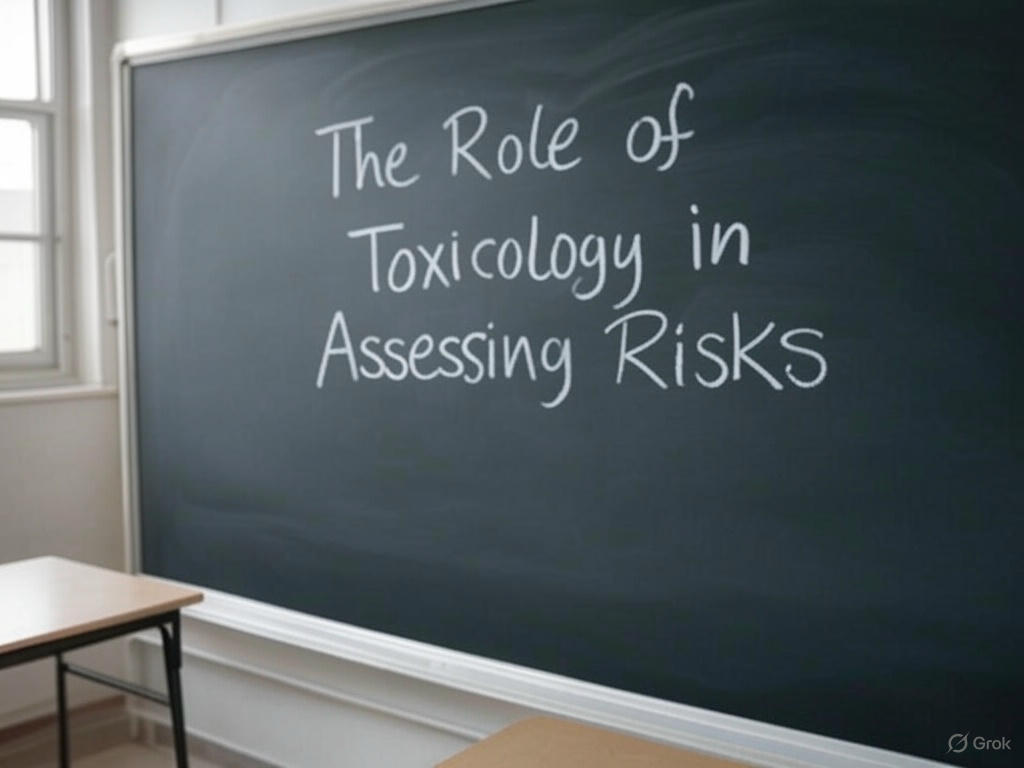The Role of Toxicology in Assessing Risks

Toxicology plays a crucial role in understanding and treating risks related to exposure to harmful substances. Whether in the environment, in jobs or in consumer products, toxicology helps to evaluate the potential dangers and inform security regulations. This blog examines how toxicology works in the evaluation of risks and the importance for the protection of public health.
Understand toxicology
Toxicology is the scientific examination of the effects of chemicals, biological substances and other active ingredients on living organisms. It tries to understand the mechanisms through which exposure to these substances can lead to harmful effects on health. Toxicologists evaluate the type and severity of these effects by examining factors such as dose, duration and exposure path (e.g. inhalation, recording or skin contact).
Risk assessment: the key connection
The risk assessment is a process with which the potential for damage caused by dangers. In this context, toxicology is a fundamental element by providing the scientific data that is necessary to understand how harmful substances influence the body. Toxicologists evaluate the toxic properties of substances and determine secure levels of exposure that are of crucial importance for risk assessment.
The risk assessment typically includes four important steps: the identification of dangers, evaluation of the dose-effect assessment, exposure assessment and risk characterization. Toxicology plays an important role in all of these steps, especially in the identification of potential dangers and the evaluation of the dose-effect relationship, which examines how the severity of the effects increases with higher substance doses.
Disease identification: Identification of toxic substances
The first step in risk assessment is the identification of dangers in which toxicologists determine whether a substance has the potential to cause damage. This includes checking the available scientific data, including laboratory studies, animal models and epidemiological research, to determine whether a substance can cause health problems such as cancer, breathing problems or neurological damage.
Toxicologists also examine various factors, such as the chemical properties of substances, their stability in the environment and their potential to accumulate in the body. The identification of toxic substances helps with the information of security standards, regulations and guidelines for exposure limits.
Evaluation of the dose response: understanding of the relationship
As soon as a danger is identified, toxicology helps to determine the dose-effect relationship. This concept examines how the severity of a toxic effect changes in relation to the range of exposure. For example, small doses of chemical can not cause damage, but with increasing dose, harmful effects can be more pronounced.
Toxicologists use various methods such as animal experiments and in-vitro studies to establish dose-effect curves. These studies help to define acceptable levels of exposure and to determine whether a substance is a significant risk of typical environmental or professional levels.
Exposure assessment: Assessment of the exposure of the real world
Exposure assessment is the process of estimate how much dangerous substance that are exposed to people and the likely exposure channels. This step includes understanding of the source of exposure, such as air, water, food or professional environments and the determination of the frequency and duration of the exposure. Methods such as inhalation oxicity tests are essential for the assessment of the risks associated with the air in the air and provide valuable data on how chemicals influence the health of the airways.
Toxicology provides insights into the behavior of substances in the body after exposure, as absorbed, metabolized and excreted. This information is crucial for the estimate of the potential health risks associated with daily exposure to chemicals.
Risk characterization: Integrate data for decision making
The last step in the risk assessment is the risk specialty, in which all data collected in the previous steps is integrated in order to estimate the potential for adverse effects on health. Toxicologists weigh the severity of the effects, the likelihood of exposure and the susceptibility of specific populations (e.g. children or pregnant women) to determine the overall risk.
The risk specialty helps the political decision -makers and regulatory authorities to make well -founded decisions about whether certain substances need regulation or control. This process also ensures that adequate security standards for the protection of public health are set.
Diploma
Toxicology is of essential importance for the evaluation and treatment of risks related to exposure to harmful substances. The toxicological provision of scientific data on the toxic effects of chemicals and other active ingredients helps to protect public health, to manage regulatory decisions and ensure that security standards are based on solid evidence.





